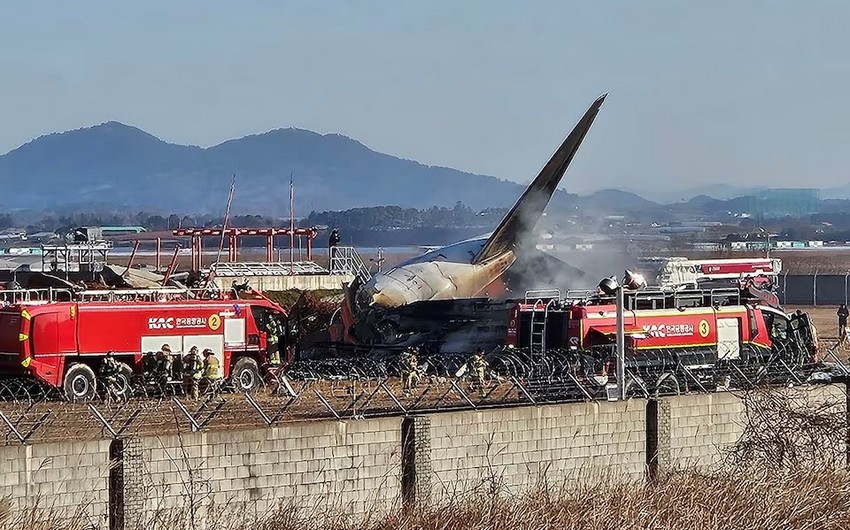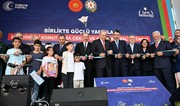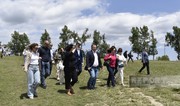The exact causes of the plane crash in South Korea are still under investigation, with several potential factors being considered. These include a bird strike, failures in the engine, landing gear, and brake system, as well as the possibility that the runway at Muan Airport may not have been long enough for emergency landings, Report informs via Yonhap news agency.
The incident involved a Boeing 737-800 operated by Jeju Air, which skidded off the runway while landing at Muan Airport, crashed into a fence, and subsequently caught fire. There were 181 passengers on board, with 174 confirmed fatalities and two survivors. Witnesses' video footage shows the plane emitting smoke as it landed, with flames visible from the right engine, followed by an explosion.
It is speculated that the plane might have struck birds, leading to engine failure, although footage shows the aircraft approaching the runway with its landing gear retracted. The plane attempted to land twice, and it remains unclear whether the first attempt failed due to landing gear or engine issues.
Additionally, there are questions regarding the adequacy of the runway length at Muan Airport, which is 2,800 meters, shorter compared to Incheon (3,700 meters), Gimpo (3,600 meters), and Gwangju (3,000 meters) airports.
However, South Korea's Ministry of Land, Infrastructure, and Transport has dismissed the runway length as a contributing factor, emphasizing that similar-sized aircraft have used the runway without problems in the past.









